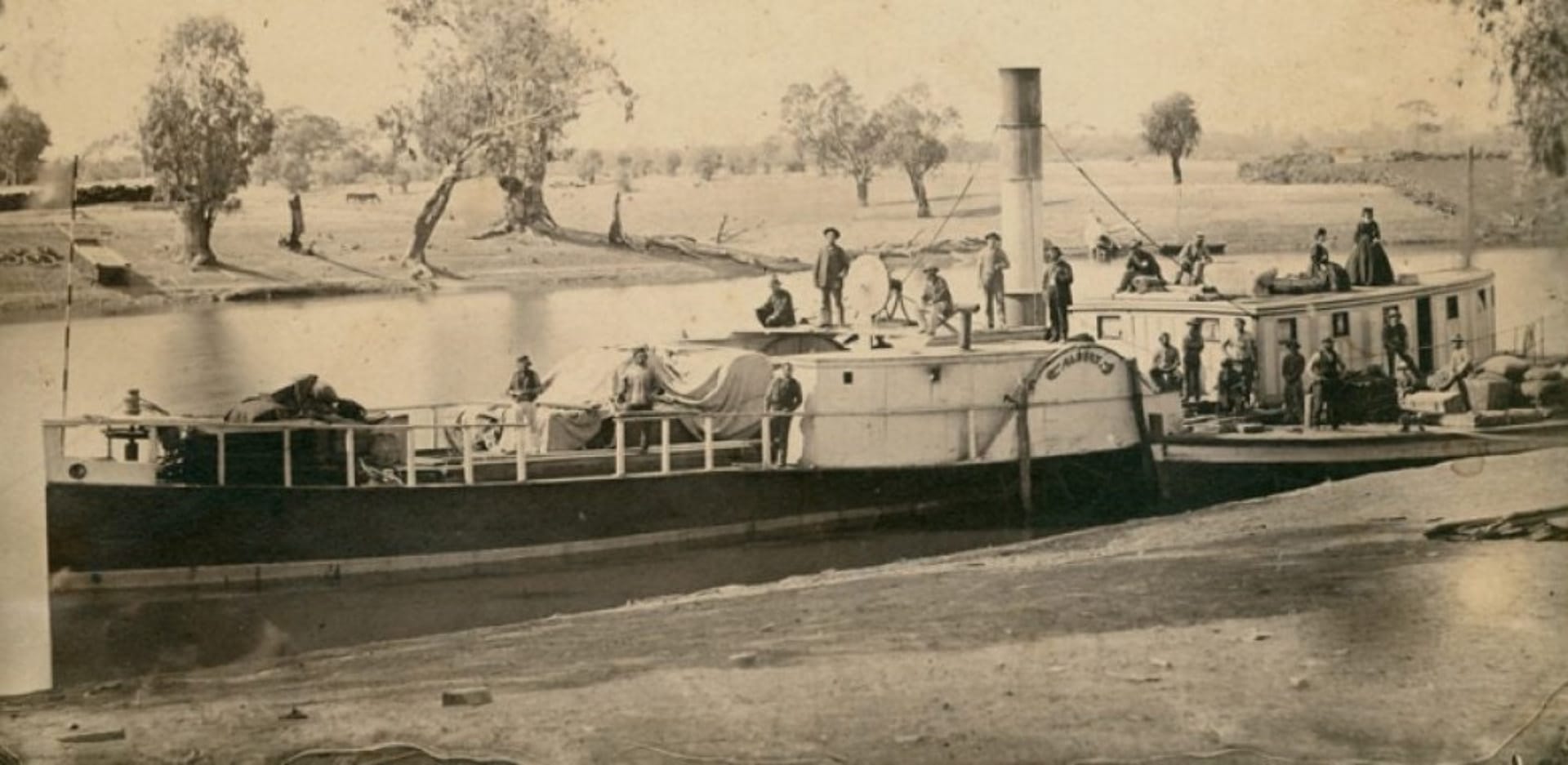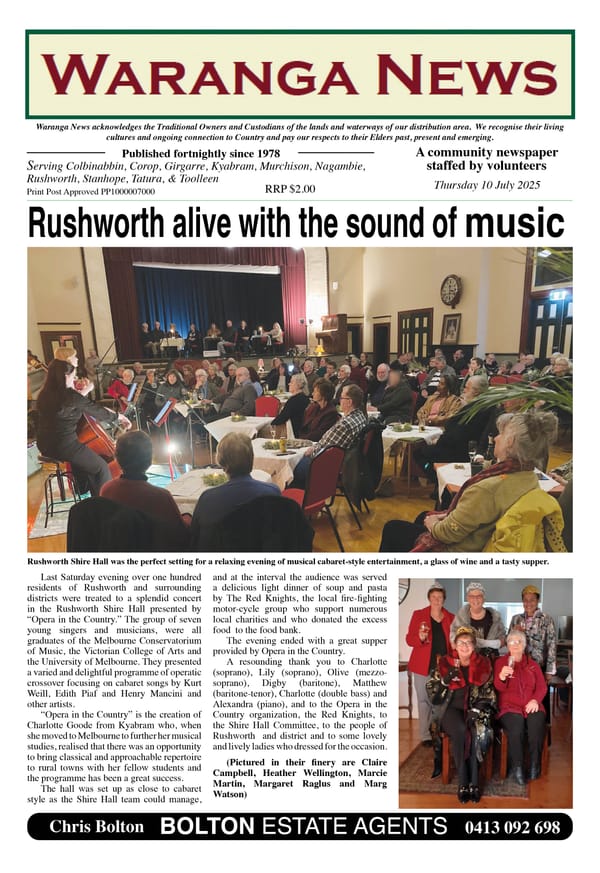4. Other ways to Waranga

The previous story talked about early Chinese miners landing in Melbourne and walking to the goldfields. Then as the Victoria government introduced an entry tax for Chinese from 1855, some landed in South Australia and walked into Victoria. Others landed in New South Wales and found their way overland.
There are records of miners crossing the Murray River at various places where there were no customs officials to demand the entry tax. The miners would then walk on to their selected goldfield. In 1857, large numbers of Chinese men were crossing the Murray at Albury, having landed in Sydney and walked down to the border.
RIVER TRANSPORT
Another way of getting relatively close to some goldfields without having to walk all the way from Adelaide or Robe was to come up the Murray River, land in New South Wales, then find someone to ferry them across to Victoria. At the time, paddle steamers were travelling right up the Murray from its lower reaches. Potential customers would have to pay their way, but this was obviously much cheaper than paying the Victorian entry tax. Those who could not afford this additional fare would have no option but to walk all the way.
One of the riverboat captains, Captain Francis Cadell, had employed Chinese men on his ships when he was engaged in the tea trade between China and Australia, as well as trading between Port Adelaide and Melbourne.1 Some of them then also worked for him on the river trade, which included passenger transport.
Two of them travelled up the Murray on the Cadell’s “PS Albury” in 1855 as far as Albury. On the way, there were regular stops in which they were able to “develop business and friendly contacts, probe the possibility of Chinese employment on various sheep stations and hotels, as well as investigate suitable land for gardens.”2

DESTINATION ECHUCA
By mid-1856 the first large groups of Chinese were being offloaded at Moama then ferried across the river without having to pay the entry tax. A group of 90 Chinese miners arrived at the end of July, then two days later “PS Leichardt”, which was towing a barge, delivered 320 more.3 It seems that this trade lasted for some time even though it would have been an uncomfortable trip of nearly 2700 km by river. The arrival of the railways in the 1860s killed off much of the river trade.
The Chinese who landed in Echuca could get the news of the latest rushes then head in that direction. They were reasonably close to the Waranga goldfields, so it could be expected that a proportion of them would finish up in this area. This was the period in which many new discoveries were being made in the Waranga area, although there was always the difficulty of gaining suitable access to water in drier months.
MOVEMENTS AROUND THE GOLDFIELDS
Of course, numbers at the Waranga goldfields were like any others, in that they were subject to the whim of the miners. If prospects looked better somewhere else, many would join the rush. The papers were full of such moves. At the end of 1855, when things were getting dry around Rushworth and Whroo, the large population “including many Chinese, during the past few months, are now gone.”4
In mid-1857, the population “of both Chinese and European, is rapidly on the increase…scarcely a day passes that I do not hear of some new yield of an extraordinary amount.” It was also reported that “large parties of Chinese are daily breaking camp on Bendigo, and taking their departure for the Goulburn”5, which was another name for the Waranga area. However, by mid-1858, “a good many of the unlucky miners are leaving this district, to seek for work on the new railway.”6
Movement between goldfields was often still done on foot, unless the miners had made enough to travel by coach, horse, or by hiring other forms of transport. Sometimes Chinese entrepreneurs provided transport to facilitate this movement. For example, a party of 8 Chinese was transported through Murchison in 1879 by Ah Gong, a licenced waggoner, on their way to Beechworth.7
Sources: 1 Holsworth, Carol, Chinese in Echuca-Moama – A Chronicle 1850s to 1930 (Echuca Historical Society, 2008) p1; 2 loc cit; 3 Courier of Mines 29.7.1856 and 1.8.1856; 4 Argus 7.12.1855 p6; 5 Bendigo Advertiser 19.7.1857 p2; 6 Ovens & Murray Advertiser 6.7.1858 p2; 7 Waranga Chronicle 2.5.1873




